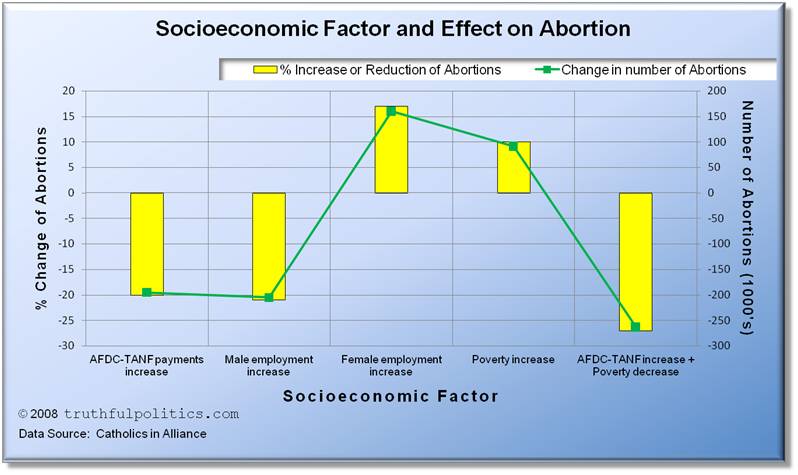Oct 062010
Joseph Wright, assistant professor at Penn State University and visiting fellow at the University of Notre Dame, produced an article for Catholics in Alliance in November of 2008 addressing the effect of socioeconomic factors in abortion reduction.
- Abortions fell by 18%-21% from 1990-2000
- An increase in economic assistance to low income families is correlated with a 20% lower abortion rate in the 1990s.
- Higher male employment was associated with a 21% lower abortion rate in the 1990s
- The same increase in female employment suggests a 17% increase in the abortion rate.
- Lower poverty rates were correlated with 10% reduction in the abortion rate.
- There “is little evidence that state policies restricting access to abortion (such as enforced informed and parental consent laws and partial-birth abortion legislation) affect the abortion rate”
AFDC stands for Aid to Families with Dependent Children. This program was changed in 1996 to TANF which stands for Temporary Assistance to Needy Families. 21 states have a limit on the number of children eligible for AFDC-TANF benefits. The study also mentioned the following:
- States with a family cap saw a much smaller decline in the abortion rate during the 1990s than states with no family cap.
- A $100 per person increase in AFDC-TANF spending decreases abortions by 20%
- “$100 per person is about $30 billion dollars, which is equivalent to the amount tax payers spent on only 12 weeks of funding for the Iraq war in 2007.”
Click on the chart below to see an enlarged, clearer chart.

To read the entire study, click on Reducing Abortion in America: The Effect of Socioeconomic Factors.
Sorry, the comment form is closed at this time.